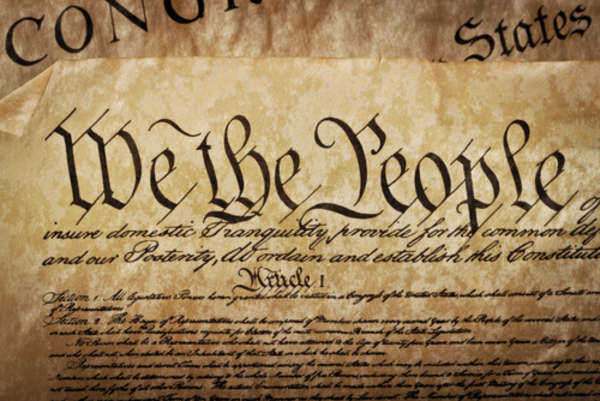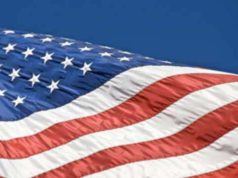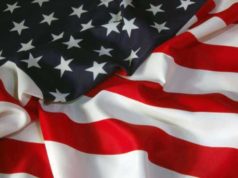
Introduction
The election of 1800 was a landmark event in American history, as it marked the first peaceful transition of power between different political parties. It was also a divisive and bitterly contested election that saw two of the Founding Fathers, Thomas Jefferson and John Adams, pitted against each other. In this article, we will explore the background, significance, and implications of the election of 1800, considered one of the most contentious elections in American history.
Background and Historical Context
The election of 1800 was held in the aftermath of the Quasi-War between the United States and France, which had strained relations between the two countries. The Adams administration had passed laws such as the Alien and Sedition Acts, which helped to fuel the feud between the Federalists and Democratic-Republicans.
The Federalist Party, led by
John Adams, supported a strong central government and a pro-British foreign policy. The Democratic-Republican Party, led by Thomas Jefferson, supported states’ rights and a pro-French foreign policy. The election of 1800 was a contest between two opposing visions of America, with each party laying out different paths for the country’s future.
The Candidates
The two main candidates in the election of 1800 were Thomas Jefferson of the Democratic-Republican Party and incumbent President John Adams of the Federalist Party. Running with Jefferson was Aaron Burr, a Democratic-Republican from New York, while Adams ran with Charles Cotesworth Pinckney, a Federalist from South Carolina.
The Election Process
The election of 1800 was conducted under the provisions of the United States Constitution, which established the Electoral College as the method for electing the President and Vice President. Each state was allocated a number of electors equal to their total number of senators and representatives in Congress.
In the electoral college for the election of 1800, each state cast two votes, one for President and one for Vice President. There were no party tickets or running mates, so each elector was free to vote for any candidate.
The Results of the Election
At the conclusion of the election, Jefferson and Burr each received 73 electoral votes, while Adams received 65 electoral votes, and Pinckney received 64 electoral votes. This meant that there was a tie between Jefferson and Burr, with neither candidate achieving a clear majority.
Under the provisions of the Constitution, the election was then sent to the House of Representatives, where the members would choose the President from the top three candidates. During the vote, each state delegation would cast one vote, and a candidate needed a majority of state delegations to win.
The Election in the House of Representatives
The election in the House of Representatives was controversial and contentious. The Federalists controlled the House of Representatives, and they were unwilling to elect Jefferson, who they viewed as a dangerous radical. The Democratic-Republicans, in contrast, saw Jefferson’s election as necessary to safeguard liberty and the principles of the Revolution.
The election in the House of Representatives was a long and contentious process, with 35 ballots taken over the course of a week. On the 36th ballot, Alexander Hamilton, a Federalist and former Secretary of the Treasury, intervened to break the deadlock and ensure Jefferson’s election.
Hamilton believed that Jefferson would be a better President than Burr, whom he viewed as untrustworthy and dangerous. In a letter sent to fellow Federalist James Bayard, Hamilton wrote that “Mr. Jefferson, though too revolutionary in his notions, is yet a lover of liberty and will be desirous of something like orderly government. Mr. Burr loves nothing but himself – thinks of nothing but his own aggrandizement.”
The legacy of the Election of 1800
The election of 1800 had several significant and long-lasting consequences for American politics and democracy. Perhaps the most important consequence was the peaceful transition of power between the Federalist Party and the Democratic-Republican Party, setting an important precedent for future elections and demonstrating the strength and stability of the American political system.
The election of 1800 also highlighted the importance of the Electoral College in presidential elections. The tie between Jefferson and Burr showed the potential for chaos in the Electoral College system, and helped pave the way for the 12th Amendment, which was ratified in 1804 and established separate votes for President and Vice President.
Finally, the election of 1800 was significant because it marked the political demise of the Federalist Party. The party would never again win a presidential election after the election of 1800, and it would eventually fade into obscurity. The election marked the rise of the Democratic-Republican Party, which would dominate American politics for several decades.
Conclusion
The election of 1800 marked a critical juncture in American history, signaling a change in the country’s political and social landscape. It was a bitterly contested election, with two opposing visions for America’s future presented by the Federalist and Democratic-Republican parties. The peaceful transition of power and the legacy of the 1800 election laid the groundwork for a new era of democracy and political stability, demonstrating the strength and resilience of American institutions and the Constitution itself.
The presidential election of 1800, the fourth presidential election in United States’ history, was one of the first to show the flaws of the U.S. Electoral College system.
The election was between Thomas Jefferson and John Adams, and as such, was something of a redux of the presidential election of 1796, which had been decided in John Adams’ favor.
But according to the U.S. Electoral College system of the time, in the 1796 election Thomas Jefferson had become Vice President. This was because the U.S. Electoral College system at the time involved electors voting for only Presidential candidates, but still receiving two votes. The candidate with the absolute majority would become President and the candidate with the next highest amount of electoral votes would become Vice President.
Thus, the 1796 presidential election had resulted in a President and a Vice President who were political opponents from two different parties. This problem of determining the President and Vice President through the U.S. Electoral College would characterize the presidential election of 1800.
Though John Adams was soundly defeated, Thomas Jefferson and Aaron Burr actually received the same number of votes in the U.S. Electoral College. This meant that neither could be definitively called the victor. Under Article 2 of the Constitution, the House of Representatives would cast a vote to decide the election if there was a tie in the voting of the U.S. Electoral College. This meant that the House of Representatives now had the power to determine who was President, which changed the race significantly.
The political parties involved in the presidential election of 1800 were the Federalists, of whom John Adams was a major representative and the Democratic-Republicans. Both Jefferson and Burr belonged to the Democratic-Republicans. Though elections had been held to change Representatives and Senators in Congress, the lame-duck Congress at the time of the presidential election was primarily Federalist. As such, the party which was opposed to both of the potential candidates would get to decide which of those two candidates won the presidential election thanks to the tie in the U.S. Electoral College.
Most of the Federalists would have preferred to vote for Aaron Burr, as Thomas Jefferson had been the opponent of the Federalist Party since that party’s inception. This was especially strange given that the Democratic-Republicans had clearly intended for Jefferson to be the presidential candidate, while he should have been the vice-presidential candidate. Thanks to the U.S. Electoral College system of the time, however, there was no functional difference and the Federalists could choose the so-called vice-presidential candidate over the presidential candidate for the winner of the presidential election.
Burr might have thus become the President of the United States if it hadn’t been for Alexander Hamilton. Hamilton, a major leader in the Federalist Party, used his significant influence to push for Jefferson’s election over Burr. Hamilton believed that it was better for Jefferson to win the presidential election because Jefferson was simply wrong, but was honest, while Burr was a dangerous liar. (Hamilton and Burr would of course go on to have the most famous duel in American history, in which Burr would kill Hamilton.) As a result, Jefferson just barely garnered more votes from the House of Representatives than did Burr, and Jefferson won the election with Burr becoming his Vice-President.
This election’s primary effect upon America was the creation of the Twelfth Amendment, which reworked the U.S. Electoral College. The Twelfth Amendment was only passed in 1804, but it importantly altered the U.S. Electoral College to allow electors to vote for both a President and a Vice-President in a presidential election, instead of voting for two different presidential candidates, or the same presidential candidate twice.
The Twelfth Amendment established further systems to help prevent any problems as occurred in this election, but the key point was that the ticket system of presidential elections, in which a President and Vice-President would run for office together, became the system of America thanks to the confusion of the election of 1800.


























